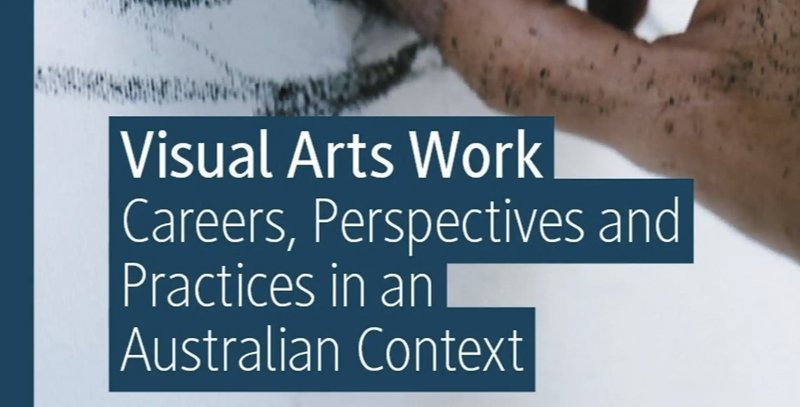Visual artists leaving the sector: New report confirms urgent need for action
Media Release
Media Release

The National Association for the Visual Arts (NAVA) has welcomed the findings of a major new research report, Visual Arts Work, which confirms Australia’s visual artists and craft practitioners are facing worsening conditions and increasingly precarious careers, prompting calls for immediate reform.
Funded by the Australian Research Council and led by RMIT University in partnership with the University of Melbourne, NAVA, and the Australian Museums and Galleries Association (AMaGA), the four-year study highlights systemic issues driving artists out of the sector.
Key findings reveal nearly half of surveyed artists had undertaken unpaid work in 2024, 63% struggle to afford essential goods and services and a stark 47% gender pay gap—far exceeding the national average of 11.5%.
“This research confirms what artists have long known: visual arts work is work. And yet it remains some of the most underpaid, insecure and unrecognised labour in Australia,” said NAVA Executive Director Penelope Benton.
“We’re talking about a workforce that’s highly educated, mostly women, navigating hybrid careers, juggling multiple jobs, and constantly under financial pressure,” said Benton. “It’s no surprise that people are leaving the sector. This report makes clear why change is needed, and why it can’t wait.”
The report likens many artists and arts workers to gig economy workers, with many lacking access to minimum wages and protections due to limited or non-existent Award coverage.
“Much like workers in the gig economy, artists and arts workers often don’t know which awards and agreements they’re covered by, if any,” said lead researcher Professor Grace McQuilten from RMIT. “Funding is enabling arts activity, but it’s not addressing pay and conditions for artists at the bottom of the food chain.”
NAVA is currently working with the Fair Work Commission to improve conditions under the Amusement, Events and Recreation Award, which could extend coverage for a range of roles in the visual arts sector, but Benton says broader systemic change is needed: “The Commission has already ruled most artists aren’t employees because they’re self-employed, so we must work through other channels like funding frameworks, tax settings, and cultural policy to ensure artists have access to some kind of pay safety net.”
Among the report’s 11 proposed actions is a call to mandate the use of NAVA’s Code of Practice for Visual Arts, Craft and Design in all publicly funded arts programs. The Code, which sets out minimum pay standards and ethical working conditions, is already endorsed through the National Cultural Policy, Revive, but the report urges governments to embed it more deeply in funding frameworks.
“Embedding the Code into funding contracts is one of the simplest and most effective ways to lift standards across the sector,” said Benton. “If public money is being used to support visual arts work, that work should meet minimum standards. No one should be expected to work for free.”
The Visual Arts Work report also points to the need for greater investment in arts education, particularly given the high number of visual artists who take on secondary employment as educators, and the systemic barriers facing women, non-binary people, racially marginalised artists, and artists with disability.
With the federal election now set for 3 May, NAVA says the time for action is now. The organisation’s #VoteForArt 2025 campaign outlines a series of policy priorities based on exactly these kinds of findings.
“We’re calling for a national artist wage scheme, tax reform to stop taxing government grants, fellowships and art prizes as income, and an overhaul of the Non-Commercial Losses provision which unfairly penalises artists,” Benton said.
“We’re also pushing for superannuation reform so that artists are paid super for all types of creative work, whether it’s an exhibition, a paid talk, a workshop or time spent in development.”
“With the federal election now just weeks away, we urge all candidates and parties to act on the findings of this report. Artists shape and enrich public life. It’s time we made sure they can also afford to live it.”
Media Enquiries
Leya Reid
media@visualarts.net.au
About NAVA
The National Association for the Visual Arts (NAVA) is a Membership organisation that brings together the many voices of the contemporary arts sector to improve fundamental conditions of work and practice. We do this through advocacy, education and the Code of Practice. For further information on NAVA visit www.visualarts.net.au
Cropped detail from the front cover of Visual Arts Work: Careers, Perspectives and Practices in an Australian Context (2025). Palgrave Macmillan.
ID: A cropped section of the book cover showing bold, modern sans-serif typography for the title Visual Arts Work: Careers, Perspectives and Practices in an Australian Context. The text is set against a deep blue border, with a background featuring a hand-drawn charcoal illustration and blue gradients.